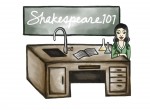As students, we are no strangers to the effects of budget cuts and their potential impact on our classrooms. Larger lectures, more students and fewer academic options have all been results of fiscal ineptitude on the part of both state and school, reflections of California’s economic troubles.
Despite this dreary outlook, there have been opportunities to reinvent aspects of traditional undergraduate education, as evidenced by recent innovations like that of the economics department this fall.
Andrew Atkeson, director of the UCLA business economics program and a professor of economics and finance, has led the formal implementation of an experimental “lab” format discussion section for business economics requirements.
The lab supplement is primarily aimed at business economics students, although all economics students have access to the offerings. In the new lab sections, students are given tasks such as group projects in which they solve complex problems and later present them to a UCLA alumnus working in the field.
This kind of thinking will provide the innovative solutions needed to mitigate the loss of academic options and maintain world-class undergraduate education, even in a time of belt-tightening.
The expansion of these lab-style supplemental courses, which have long been a staple in the hard sciences, to areas such as the social sciences and humanities would serve to enhance a student’s educational experience in ways Atkeson believes are better than rote memorization.
“We wanted students to work on problems that don’t have a right answer, problems that have ambiguity as to what the answer is,” Atkeson said of the business economics program. “We set up these lab courses precisely to address the concern that economics students need to do something other than just answer midterm and final exam questions.”
This approach would apply to other departments as well. In an English class, instead of reading Steinbeck and Shakespeare and discussing them with a teaching assistant, staff could organize trips to museums to understand the historical context of the author or to theatrical productions to better understand modern interpretations of their work. Instead of flipping through Marx’s manifesto, history students could listen to speakers debate his theories’ relevance in today’s political context.
Administratively, such changes would be difficult to apply across such a broad number of departments, but faculty should seek to identify opportunities to build on such experiential education, focusing on upper division courses.
In lower division courses, the primary aim is to introduce basic information, which often requires more memorization than interpretation. In this context, the current discussion format works well alone.
Later in a student’s undergraduate career, the responsibility falls on the teacher to develop ways of encouraging student-led analysis and application of course material.
Not all departments or courses may have use for this model. In some cases, traditional teaching methods may already include a similar hands-on approach, but departments should identify opportunities, as Atkeson did, to use experiential education to reinforce core lessons.
But with such change and innovation, one should keep in mind an old economics adage: there’s no such thing as a free lunch.
Atkeson noted that the implementation of the model was not cheap. A significant amount of money was used to hire staff who could make the connections with alumni and organize their visits.
While the expansion of department staff may require some sacrifices, the long-term benefits to students will outweigh the cost to the university.
Email Nelson at rnelson@media.ucla.edu. Send general comments to opinion@media.ucla.edu or tweet us @DBOpinion.
